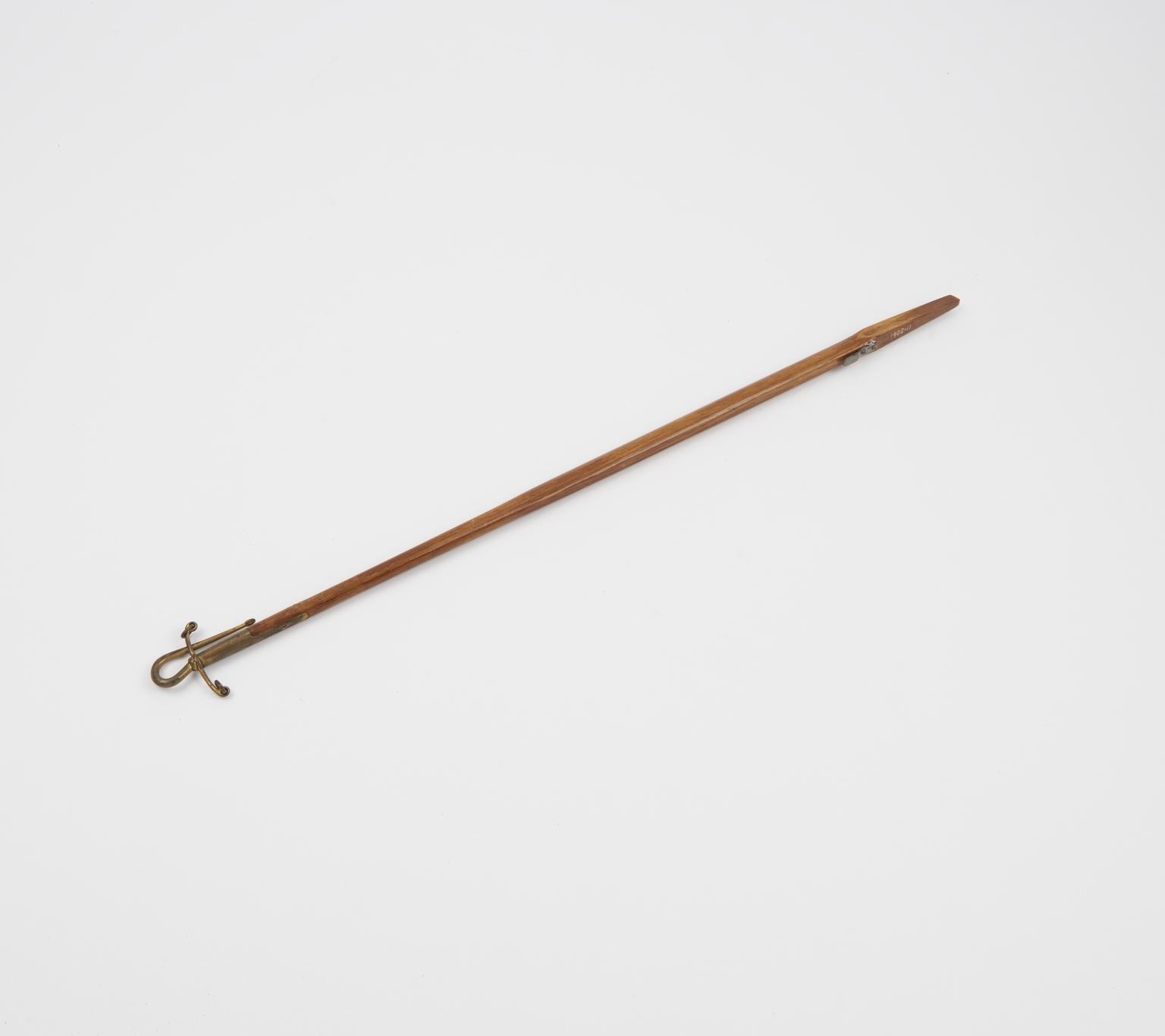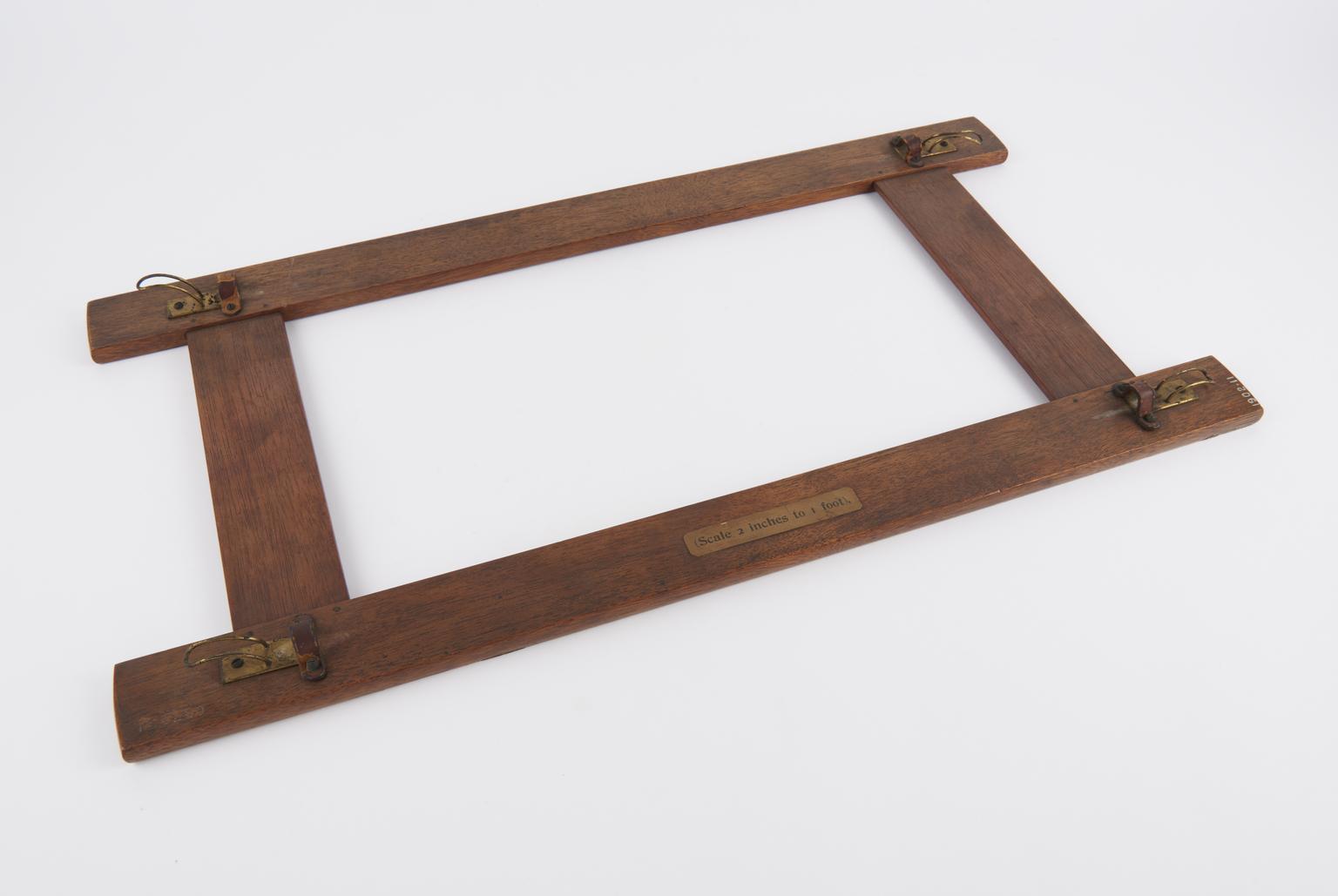
Model of a pair horse 'landau' carriage
Pair horse landau, unpainted and without upholstery, model (scale 1:6).
Pair horse landau, unpainted and without upholstery, model (scale 1:6)
This carriage, taking its name from the German town of Landau, became popular during the mid-18th century.
The model represents the most general form of pair-horsed private carriage. The materials have been left in their natural colours and the upholstering omitted so that the details of construction can be more clearly seen.
The underframe is chiefly built of steel, and is carried upon the hind axle by elliptical springs, while at the front it rests on a fore-carriage supported on similar springs. At each of the four corners body is suspended by adjustable projects upwards a C spring from which the carriage body is suspended by adjustable leather straps. The body is framed in wood and covered with thin panelling, but longitudinal strength is given in the middle by a steel plate at each side, set on edge; the attachments for the supporting straps are made of steel bars secured to the body and to these plates, while extending almost to the doorway. The driver's box is carried by a steel framework attached to the body, of which it forms an extension, and side swinging is checked by tranverse leather straps, connecting the body with the underframe.
During inclement weather the carriage can be converted into a closed one by swinging upwards the two hoods, which meet at the top and form a continuous closed roof and sides, except at the door ways, which spaces may then be completely closed by glass windows that can be pulled upwards from recesses containing them in the lower portion of the doors. The work of raising the hoods is facilitated by springs, while when in position they are fixed by a knuckle-joint arrangement that tightens the leather covers.
The vehicle is steered by a pole attached to the fore-carriage, and the pull of the horses is exerted by four traces also connected to the fore-carriage. The wheels have iron tyres, into which cushion tyres of rubber are secured.
In the landau represented there is a brake fitted to the hind wheels, and capable of being applied by the driver through a wire rope and a pair of levers carrying brake pads and having their fulcrums secured to the underframe.

Pair horse landau, unpainted and without upholstery, model (scale 1:6).

Centre pole from a pair horse landau, unpainted and without upholstery, model (scale 1:6).

Rectangular, wooden frame-like component from a model of a pair horse landau carriage. There are four metal hooks, one in each corner, and a plaque on one side with text which reads '(Scale 2 inches to 1 foot)'.